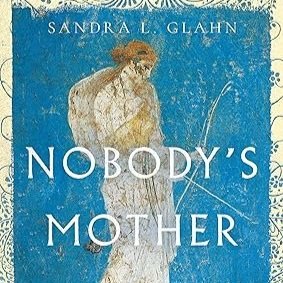Books I’ve read in 2024 (so far)
Bible Study
Being God’s Image: Why Creation Still Matters (2023)
By: Carmen Joy Imes
Dr. Imes gives great insight into common misconceptions about the Image of God and its relevancy to the Gospel. She helps map out the story of the Bible through the lens of humanity being God’s image, as well as the creation mandate to take care of the earth. This book is informative, challenging, and applicable to all Christians wanting to go deeper in Scripture. This would especially be a great resource for small groups.
Nobody’s Mother: Artemis of the Ephesians in Antiquity and the New Testament (2023)
By: Sandra L. Glahn
Dr. Glahn explores one of the most debated passages of the whole New Testament: 1st Timothy 2:8-15. What is it Paul is forbidding women to do, and why does he say they’ll be saved through childbearing? Dr. Glahn gives some overview to the various interpretations of this passage, primarily focusing on the local context of Ephesus and their religious devotion to Artemis.
The strengths of this book is the Ephesian context given and how it may influence some of Paul’s words in both his epistle to the Ephesians as well as 1st Timothy. The book leans towards a more Egalitarian perspective, which I happen to lean toward. While the book is helpful for better understanding Paul’s instructions for 1st Timothy 2, I am doubtful Nobody’s Mother will change most Complimentarians’ minds on the subject. This isn’t of course meant to be the purpose of Dr. Glahn’s book, but it should be said for any Egalitarian hoping this will be a slam dunk for their theological view.
With that said, this book is a solid resource for anyone wanting to explore both 1st Timothy 2 and the early Church within Ephesus.
The Old Testament in Revelation: Notes from the Naked Bible Podcast (2021)
By: Michael S. Heiser
The late Dr. Heiser published a commentary on Revelation, stemming from his excellent podcast series, which focuses on Revelation’s usage of the Old Testament. Dr. Heiser leans on his strengths by focusing on just that subject, and not giving his interpretation of each verse.
If you’re looking for an entire commentary that covers Revelation and its meaning from start to finish, this isn’t the right resource. But if you’re interested in seeing how Revelation pieces together the Biblical story together in it’s apocalypse, this is a great commentary to have for reference.
Church History
Illness, Pain, and Health Care in Early Christianity (2022)
By: Helen Rhee
Definitely the most academic book I’ve read so far this year, Dr. Rhee gives a heavy but fascinating overview of how the early Church viewed illness, pain, medicine, and healing. Giving both Jewish and Greco-Roman context, Dr. Rhee examines how the New Testament describes these topics, as well as the diverse ways the Church Fathers viewed them and adapted them over time with the culture. This book is a great resource for professors and students, but probably a bit too much for casual readers.
On Marriage and Family Life
By: St. John Chrysostom, translated by Catherine P. Roth and David Anderson (1986)
Church Father John Chrysostom gave what many consider to be one of the more nuanced and appealing views of marriage in the early Church. Unlike other theologians of his time, John saw marriage as a beautiful creation by God, and drawing heavily from Ephesians 5, preached its primary purpose was first and foremost to imitate Christ’s love and union with the Church.
Eucharist and Church Fellowship in the First Four Centuries (1966)
By: Werner Elert, translated by N.E. Nagel (1998)
Dr. Elert gives an overview of fellowship and participation of the Eucharist within the first four centuries of the Church. While some attention is given to the theology of Christ’s presence, Dr. Elert focuses more on the complicated history of church divisions, politics, and convictions of fellowship and heresy.
There’s certainly interesting points made in the book regarding the different issues occurring over the early centuries, but I was personally left wanting more from this work. It’s very well researched, but I was more interested in learning about the developments of how the Eucharist was understood in the early Church.
Liturgy
O Sacred Head, now Wounded: A Liturgy for Daily Worship from Pascha to Pentecost (2024)
By: Jonathan Gibson
Jonathan Gibson has so far published three beautiful liturgy books through Crossway, with “O Sacred Head, now Wounded” covering the Easter season. These daily liturgies could be used for personal devotionals or family time, but honestly each day has enough content to cover a church gathering: worship songs, confession of sin, reciting classic creeds, reading over Reformed catechisms, and plenty of Scripture. Gibson has put together a great resource for liturgy over the course of Easter.
Pentecost: A Day of Power for All People (2023)
By: Emilio Alvarez
This is the second book I’ve read from the Fullness of Time series, the first being “Lent” by Esau McCaulley. Like Dr. McCaulley’s book, I thoroughly enjoyed Dr. Alvarez’s overview of Pentecost. The book is a nice and short introduction to the holiday’s history and what it means for Christians today. Dr. Alvarez also gives some great coverage of the diversity of liturgy Christian traditions throughout history used to celebrate Pentecost.
Every Moment Holy: Volume 1 (2020)
By: Douglas Kaine McKelvey and Ned Bustard
Douglas Kaine McKelvey and Ned Bustard have put together a beautiful and diverse liturgy book, covering a wide arrangement of occasions to pray. These prayers are both nuanced enough to reach different scenarios while also specific enough to move the reader’s heart and relate to its words. There are currently three volumes published, and I look forward to getting the other two soon. I highly recommend this series to anyone interested in using prayer books for church, small groups, families, and personal devotion.









